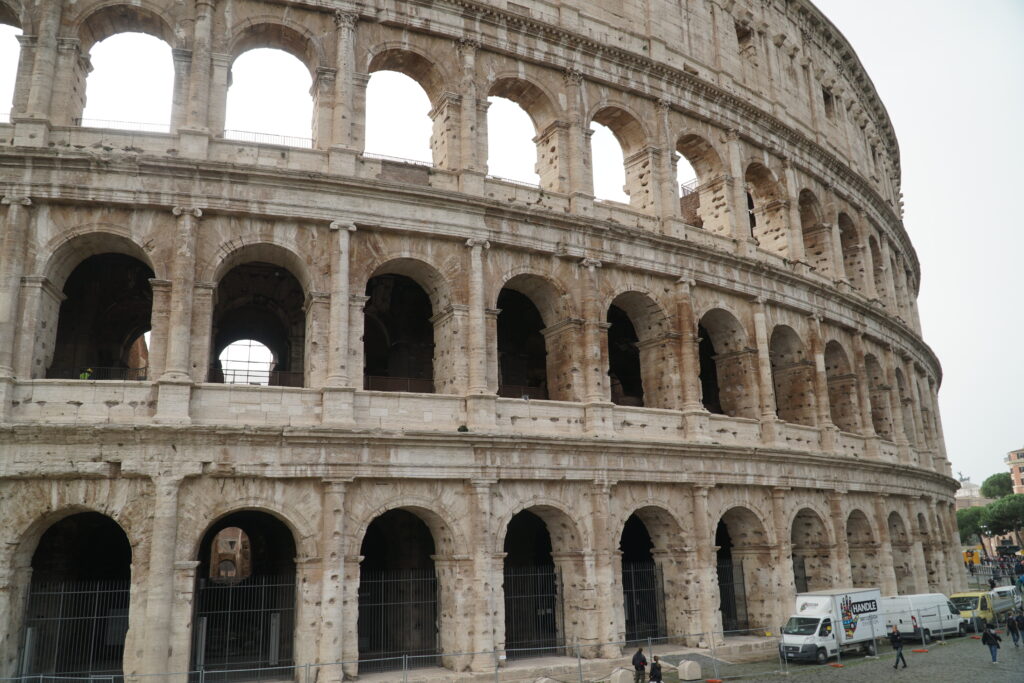1. The Arch – The Secret Behind Architectural Marvels

If you’ve ever walked under a stone bridge or admired a grand cathedral, you’ve seen the power of the arch. Unlike simple beams or columns, arches distribute weight evenly, allowing builders to create massive, open spaces without fear of collapse. The ancient Mesopotamians first experimented with arches over 4,000 years ago, but it was the Romans who truly perfected them. By using arches in aqueducts, amphitheaters, and even their famous Colosseum, they revolutionized architecture and engineering. This innovation allowed them to build taller, more durable structures that still stand today.
Modern architecture still relies on the arch’s strength and efficiency. Bridges, tunnels, and even some skyscrapers incorporate this ancient technique to ensure stability and longevity. Engineers continue to study Roman arches to develop earthquake-resistant buildings and stronger infrastructure. Whether in a medieval castle or a modern city skyline, the arch remains one of history’s greatest engineering breakthroughs—proving that some ideas are too brilliant to fade away.
2. The Water Wheel – The First Renewable Energy Source

Before hydroelectric dams powered entire cities, water wheels were the original renewable energy source. Invented by the Greeks over 2,000 years ago, these simple yet effective machines used the force of flowing water to grind grain, saw wood, and even power early factories. The Romans later improved the design, creating massive water-powered mills that increased food production and supported growing populations. In the medieval period, water wheels became the backbone of industries, helping communities process raw materials with minimal human effort.
Though it might seem like a relic of the past, the water wheel never truly went out of style. Today, hydroelectric power plants operate on the same basic principle—using moving water to generate energy. Some rural areas still rely on water wheels for small-scale energy needs, and engineers are revisiting this technology for sustainable power solutions. With the world shifting toward green energy, the water wheel’s ancient legacy is more relevant than ever. It’s proof that some of history’s best inventions just needed a little modern tweaking to stay useful.
3. The Compass – The Tool That Changed Navigation Forever

Imagine a world where sailors relied solely on the stars to find their way across vast oceans. Before the compass, long-distance travel was a dangerous guessing game, and even experienced navigators could find themselves hopelessly lost. The first compasses, invented in China over 2,000 years ago, were made from lodestone, a naturally magnetic mineral that always pointed north. This simple yet revolutionary tool quickly spread across the world, guiding explorers, merchants, and armies to new lands. Without the compass, history might have taken a very different course, as global trade and exploration would have been far more difficult.
Even in the age of GPS and satellite navigation, the compass remains essential. Hikers, pilots, and sailors still carry them as backups in case technology fails. The basic principle of magnetic navigation is even used in modern aircraft and submarines, proving that this ancient invention is far from obsolete. In fact, scientists continue to study Earth’s magnetic field, improving navigation systems based on the same principles first discovered thousands of years ago. The compass isn’t just a relic of the past—it’s a reminder that sometimes, the simplest ideas have the most lasting impact.
4. Concrete – The Roman Secret to Lasting Construction

When you walk past a modern skyscraper or a highway overpass, you probably don’t think about ancient Rome. But without the Romans, our cities would look very different. They perfected the art of concrete construction over 2,000 years ago, and some of their structures still stand today. Roman concrete was incredibly durable because they mixed volcanic ash with lime and seawater, creating a chemical reaction that made it stronger over time. Many of their buildings, from the Colosseum to aqueducts, owe their longevity to this brilliant invention. Even underwater structures built by the Romans remain remarkably intact, showing just how advanced their methods were.
Modern concrete may seem like an improvement, but scientists are still trying to figure out the full secret behind the Romans’ formula. Today’s concrete, while strong, eventually cracks and crumbles, requiring constant repairs. That’s why engineers are studying ancient techniques to create self-healing concrete that could last as long as the Roman masterpieces. Whether it’s in roads, bridges, or even your own home, concrete remains one of the most widely used materials in the world—proving that some ancient ideas are simply too good to replace.
5. The Surgical Scalpel – Medicine’s Oldest Precision Tool

Surgery might seem like a modern marvel, but ancient civilizations were performing intricate procedures long before hospitals and sterile operating rooms existed. The scalpel, one of the most fundamental surgical tools, dates back over 2,500 years to ancient Egypt and Greece. Early surgeons used sharpened obsidian, bronze, or iron blades to make precise incisions, improving medical treatments with each generation. The Romans later refined surgical tools, ensuring cleaner, more efficient procedures that saved lives. Even in the Middle Ages, skilled doctors relied on scalpels for everything from battlefield medicine to complex operations.
Today’s scalpels may be made from high-quality stainless steel or even lasers, but the fundamental design remains unchanged. Surgeons still rely on this ancient tool for its precision, proving that some inventions are timeless. Even medical advancements in robotics and microsurgery build upon the scalpel’s original purpose—making the smallest, most accurate cuts possible. It’s a testament to human ingenuity that something designed thousands of years ago is still essential in operating rooms around the world.


